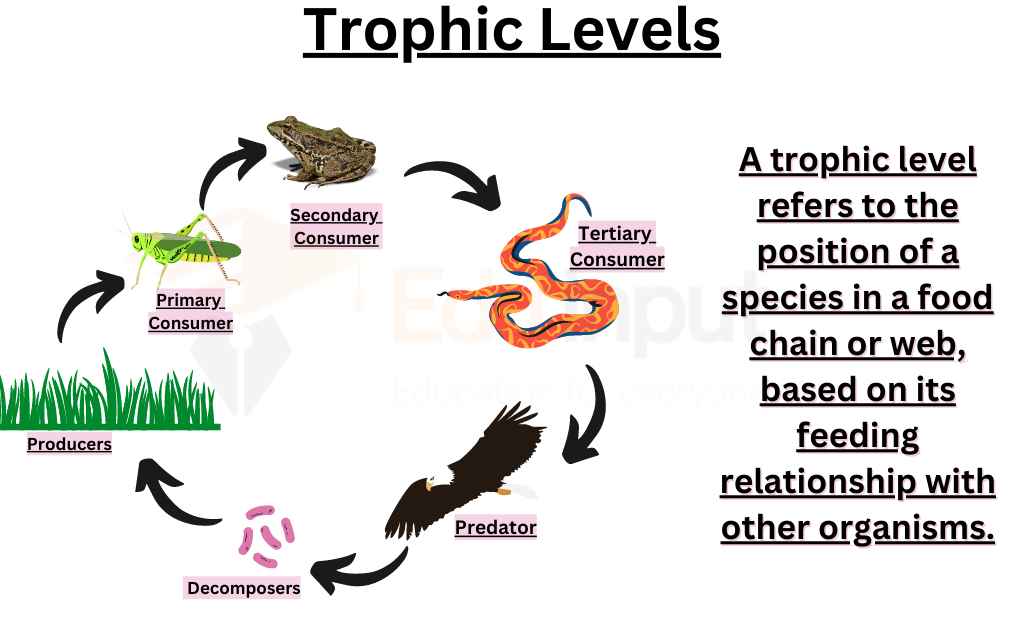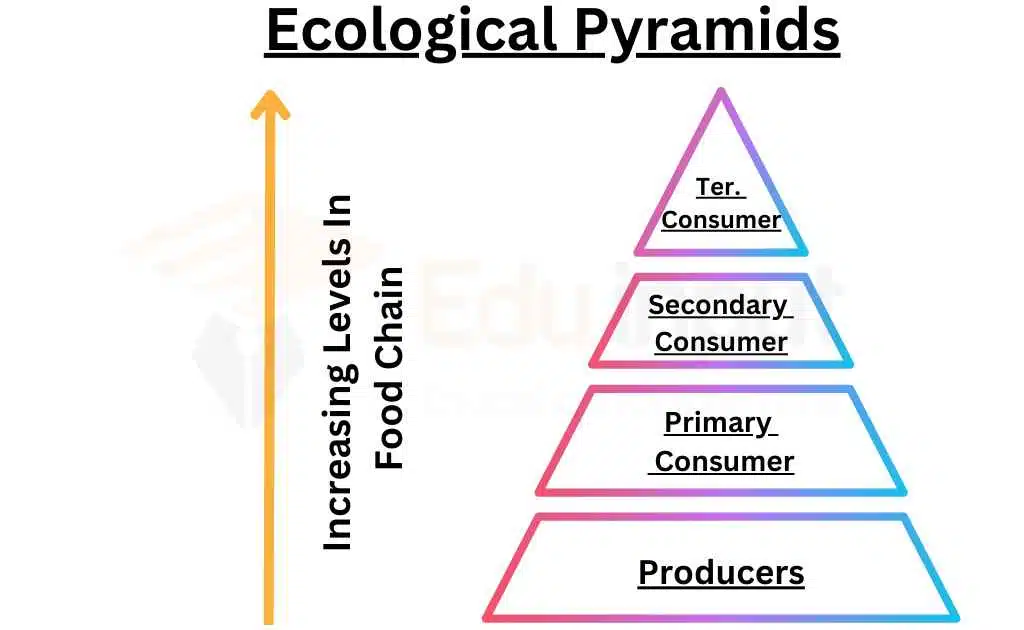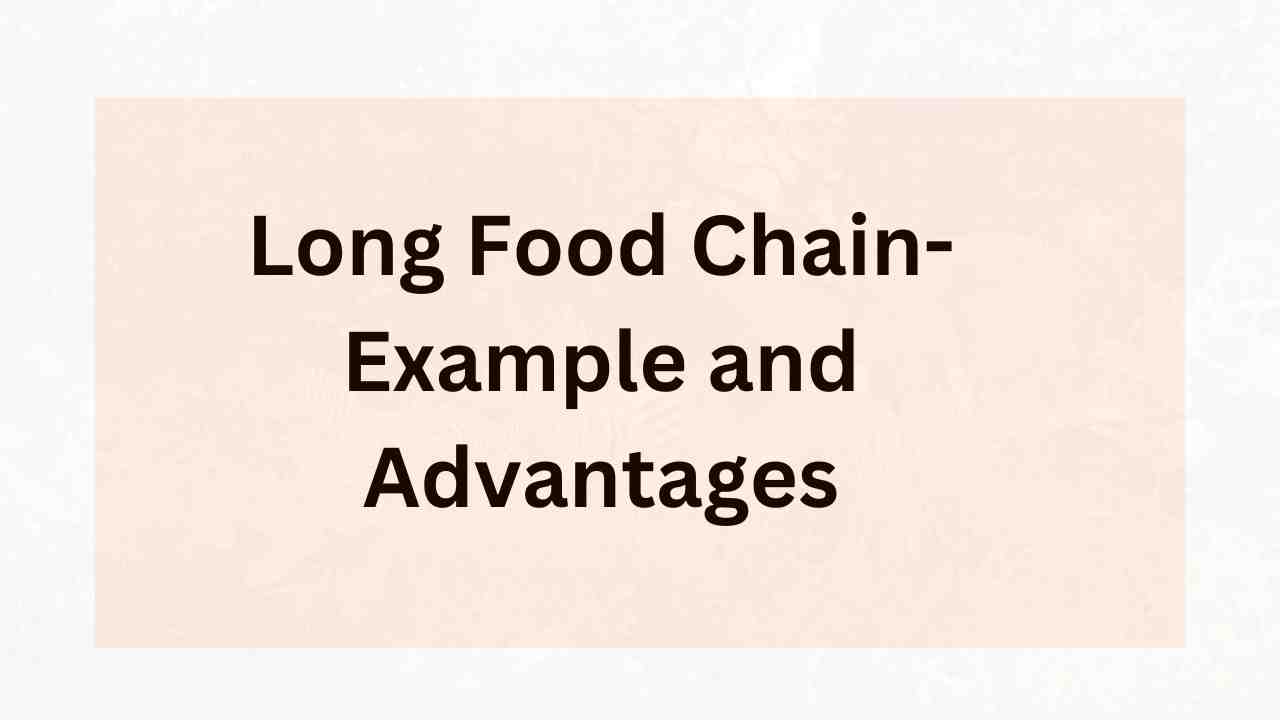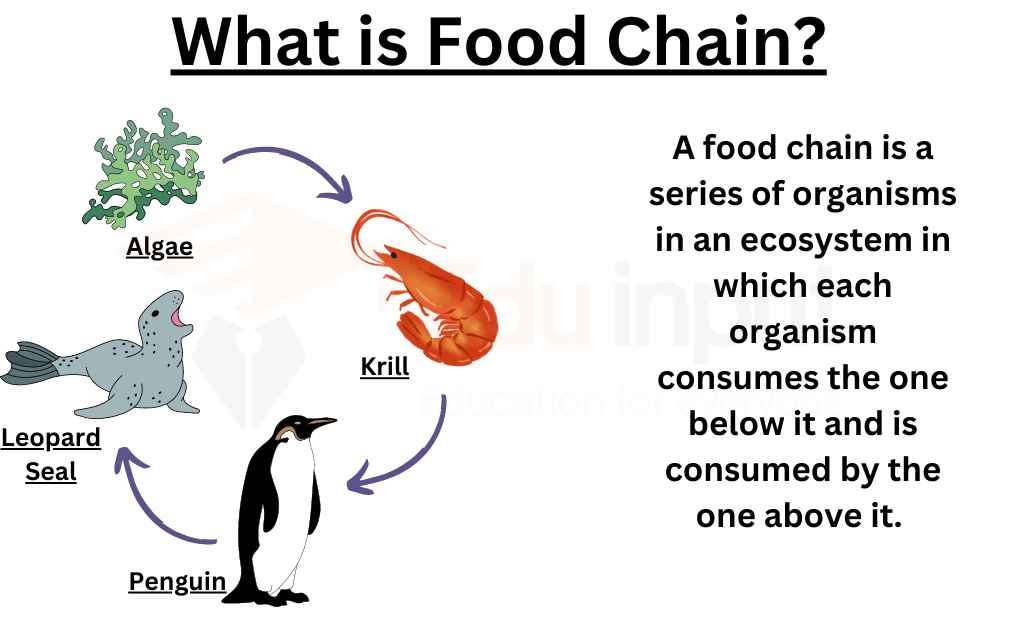Trophic Levels In An Ecosystem | Ecological Pyramid
An ecosystem is a complex network of living organisms and their surrounding environment. At the base of this network lies the concept of trophic levels, which is the hierarchical structure of energy transfer in the ecosystem.
| Key Points |
|---|
| 1. An ecosystem is a complex network of living organisms and their surrounding environment, based on the concept of trophic levels. 2. Trophic level is the hierarchical structure of energy transfer in the ecosystem, representing different levels of energy flow and transfer. 3. The number of trophic levels is limited by the amount of energy available, with the 10% rule stating that only 10% of energy is passed from one trophic level to the next. 4. Trophic levels are divided into producers (autotrophs), consumers (heterotrophs), and decomposers, each with a specific relationship in the food chain. 5. Producers are the primary source of energy, creating their own food through photosynthesis or chemosynthesis. 6. Consumers can be further classified into primary, secondary, and tertiary consumers, depending on the trophic level they feed on. 7. Decomposers, such as bacteria and fungi, break down dead organic matter, recycling nutrients back into the ecosystem. 8. The number of trophic levels varies depending on the type of food chain, with detritus food chains having more trophic levels due to the high abundance of organic matter and nutrients. |
Trophic Level
A trophic level refers to the position of a species in a food chain or web, based on its feeding relationship with other organisms. Simply it is the level at which an organism feeds on other organisms and is in turn eaten by others. Each trophic level represents a different level of energy flow and transfer within the ecosystem.

Trophic levels represent the flow of energy and nutrients through the ecosystem. As energy moves up the food chain, it becomes increasingly concentrated in the bodies of organisms at higher trophic levels. This concentration of energy is called biomagnification, which can have serious consequences for the health of the ecosystem and the organisms that inhabit it.
The number of trophic levels in an ecosystem is limited by the amount of energy available at the base of the food chain. As energy is lost with each transfer between trophic levels, there is less energy available to support the next level of consumers. This phenomenon is known as the 10% rule, which states that only 10% of the energy at one trophic level is passed on to the next trophic level.
For example, if a producer such as a plant has 10,000 units of energy, only 1,000 units of energy are available to the primary consumer that eats the plant. The secondary consumer that eats the primary consumer would only receive 100 units of energy.
The 10% rule means that there is a limit to the number of trophic levels that can exist in an ecosystem. If there were too many levels, the energy available at the base of the food chain would be too low to support the higher levels. This is why most ecosystems have only a few trophic levels.
Trophic Levels In an Ecosystem
The concept of trophic levels is an essential component of understanding the food web and energy flow in an ecosystem. It refers to the hierarchical structure of energy transfer between different organisms in the ecosystem. The trophic levels are divided into three categories, which are producers, consumers, and decomposers. Each of these categories is defined by the relationship an organism has with the others in the food chain.
Producers-First Trophic Level
Producers, also known as autotrophs, are the primary source of energy in an ecosystem. They are capable of creating their own food through photosynthesis or chemosynthesis. The producers convert light energy into chemical energy in the form of organic compounds, which is stored in their tissues. Examples of producers include plants, algae, and some bacteria.
Consumers-Second and Third Trophic Levels
Consumers are heterotrophs and depend on other organisms for their food. They can be further classified into primary, secondary, and tertiary consumers, depending on the trophic level at which they consume their food.
Primary consumers are herbivores, which feed directly on producers. Examples of primary consumers are grasshoppers, rabbits, and cows.
Secondary consumers are carnivores that eat herbivores. Examples of secondary consumers are snakes, birds of prey, and lions.
Tertiary consumers are carnivores that feed on other carnivores. They are at the top of the food chain and have no natural predators. Examples of tertiary consumers include sharks, eagles, and humans.
Decomposers-Fourth Trophic Level
Decomposers, such as bacteria and fungi, play a critical role in recycling nutrients back into the ecosystem. They break down dead organic matter, including dead plants and animals, and return nutrients to the soil. The nutrients are then used by the producers to create food, starting the cycle again.
Examples of Trophic Levels
In a forest ecosystem, trees and other plants would be the producers, while deer and other herbivores would be primary consumers. Wolves or other predators that feed on the herbivores would be secondary consumers, and scavengers or decomposers that break down dead organisms would be tertiary consumers.
Here is an example of trophic levels in aquatic ecosystem:
| Trophic level | Example |
|---|---|
| Producer – 1st Trophic level | Algae in the ocean |
| Primary consumer – 2nd Trophic level | Krill eat algae |
| Secondary consumer – 3rd Trophic level | Small fish like anchovies eat krill |
| Tertiary consumer – 4th Trophic level | Larger fish like tuna eat the small fish |
| Quaternary consumer – 5th Trophic level | Sharks eat the larger fish like tuna |
In an ocean ecosystem, algae and phytoplankton would be the producers, while small fish would be the primary consumers. Larger fish, such as tuna or sharks, would be secondary consumers, and decomposers such as bacteria would break down dead fish and other organisms.
Number of Trophic Levels in Detritus Food Chain
The number of trophic levels in an ecosystem varies depending on the type of food chain or ecological pyramid being considered. In a detritus food chain, the number of trophic levels is typically higher than in a regular food chain.
A detritus food chain begins with dead organic matter, such as fallen leaves or dead animals. Decomposers, such as bacteria and fungi, break down this organic matter and release nutrients back into the soil. The nutrients are then absorbed by plants, which are consumed by herbivores and then by carnivores.
Due to the high abundance of organic matter and nutrients, detritus food chains can support more trophic levels than regular food chains.
Number of Trophic Levels in Ecological Pyramid
In an ecological pyramid, the number of trophic levels is limited by the 10% rule. The base of the pyramid consists of producers, such as plants, which are consumed by primary consumers, such as herbivores.
The primary consumers are then consumed by secondary consumers, and so on. As energy is lost at each trophic level, the number of levels is limited to prevent the energy available at the base of the pyramid from becoming too low to support higher levels.

Trophic Level in Food Chain
A food chain is a linear representation of trophic levels in an ecosystem, showing the flow of energy from producers to consumers and decomposers. For example, a simple food chain in a grassland ecosystem might look like this:
Grass → Grasshopper → Bird → Fox
Each organism occupies a different trophic level and plays a vital role in the ecosystem.
Trophic Level of Pitcher Plant
Pitcher plants are carnivorous plants that feed on insects and other small organisms. They are considered secondary consumers in the ecosystem, as they consume other organisms that have already consumed plant material.
Trophic Level of Human
Humans are omnivores and can occupy different trophic levels in the ecosystem, depending on their diet. Those who eat primarily plants would be considered primary consumers, while those who eat meat would be classified as secondary or tertiary consumers.
Importance of Trophic Levels
Trophic levels are important because they help maintain the balance and stability of the ecosystem. If one trophic level is affected, it can have a cascading effect on the entire ecosystem. For example, if a predator at the top of the food chain were to disappear, it could cause an overpopulation of the prey species, which could then cause a decrease in the number of primary producers due to overconsumption.
Function of Trophic Levels in an Ecosystem
Trophic levels play a critical role in maintaining the balance and stability of the ecosystem. The producers form the base of the food chain and provide energy for all other trophic levels. The consumers, in turn, control the population of the organisms they consume and prevent any one species from becoming too dominant.
The decomposers break down dead organic matter and return nutrients to the soil, which is essential for the growth of the producers. They also play a crucial role in removing waste and preventing the accumulation of dead organisms, which can harm the ecosystem.
Understanding how trophic functions emerge is important to quantify ecosystem vulnerability to global change. Scientists propose a new framework, called interaction functional space (IFS), which integrates the perspectives of functional diversity and network ecology to analyze trophic functions. This framework can help understand the effects of traits and interactions on trophic functions, and facilitate understanding of functional changes in ecosystems amidst global change. [1]
FAQs
Why do biologists measure the number of trophic levels in an ecosystem?
Biologists measure the number of trophic levels in an ecosystem to understand the flow of energy and nutrients through the food chain, as well as to evaluate the health and stability of the ecosystem.
Explain the function of trophic levels in an ecosystem?
The ultimate function of trophic levels is to maintain a balance and transfer of energy and nutrients through the ecosystem.
What limits the number of trophic levels in a food chain?
The amount of energy available at the base of the food chain limits the number of trophic levels in a food chain.
Is the number of trophic levels limited?
Yes, the number of trophic levels is limited by the amount of energy available at the base of the food chain.
Why is energy lost between trophic levels?
Energy is lost between trophic levels due to inefficiencies in the transfer of energy from one organism to another, as well as the use of energy by organisms for metabolic processes and movement.
What are the five trophic levels in an ecosystem?
Autotrophs (producers)
Primary consumers
Secondary consumers
Tertiary consumers
Quaternary consumers






Leave a Reply